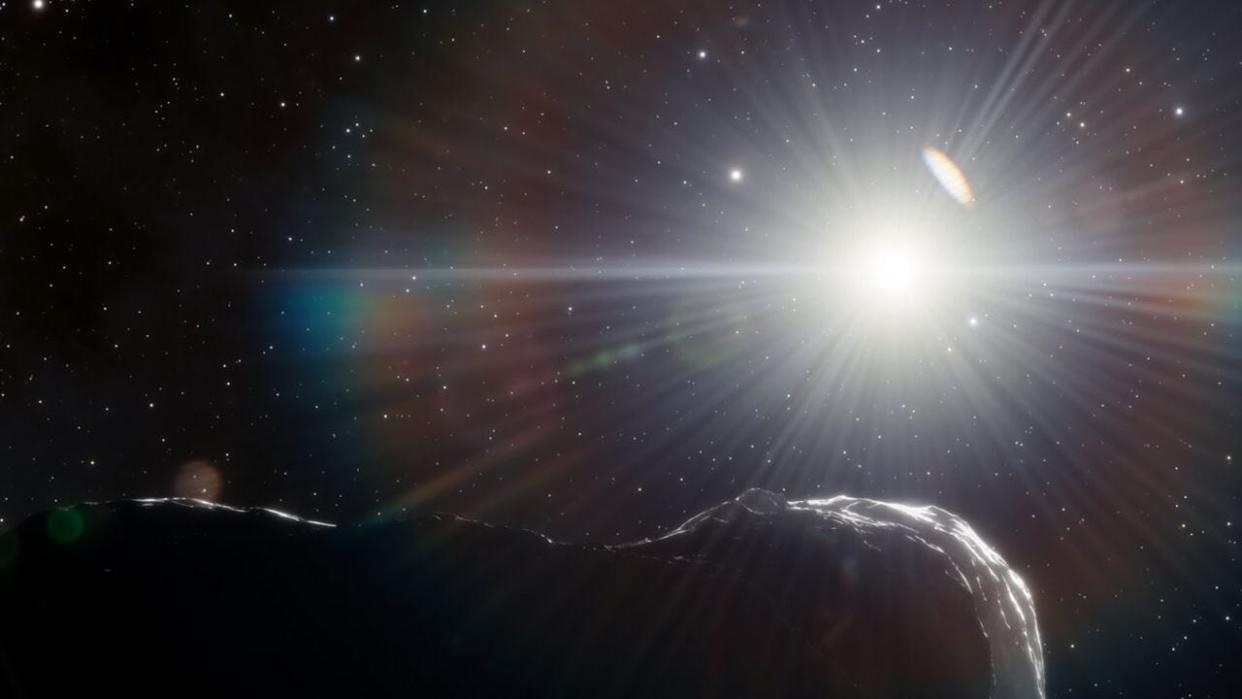Astronomers have detected three asteroids in close proximity to Earth, two of which pose a potential threat as “planet killers” because of their larger and hazardous size, but don’t worry, says a NASA expert, they aren’t expected to hurt us.
According to findings published in the peer-reviewed Astronomical Journal on Monday, the three asteroids – which belong to a group found within the orbits of Earth and Venus – were previously undetectable via telescope due to the glare and brightness of the sun.
However, an international space team of astronomers waited until twilight at an observatory in Chile to examine the asteroids using a dark energy camera from a Víctor M. Blanco 4-meter Telescope, according to the National Science Foundation’s NOIRLab.
The biggest asteroid is the most hazardous object to prompt a significant risk to Earth in the last eight years, researchers say. One of the asteroids, named 2022 AP7, is a little less than one mile wide but has an orbit that could reach Earth’s path in the distant future. A timetable is uncertain, though, according to findings in the journal.
Skyscraper-sized asteroid to pass Earth: Here’s how close it will actually get
NASA: DART mission successfully smashed an asteroid aside in deep space
The other two asteroids, 2021 LJ4 and 2021 PH27, pose less of a risk to colliding with Earth, researchers say.
“Our twilight survey is scouring the area within the orbits of Earth and Venus for asteroids,” lead study author Scott S. Sheppard, an astronomer at the Earth & Planets Laboratory of the Carnegie Institution for Science in Washington, D.C., said in a statement. “So far we have found two large near-Earth asteroids that are about 1 kilometer across, a size that we call planet killers.”
Scientists from the study determined the asteroid with most likelihood to cross Earth’s orbit will currently “stay well away from Earth,” largely because the sun would block it since its timing of crossing Earth’s orbit would be when Earth is on the opposite side of the sun.
Should an asteroid that’s half a mile long ever connect with Earth, the results to the planet could be “devastating,” according to Sheppard, because of the impact pollutants would have on the atmosphere.
“It would be a mass extinction event like hasn’t been seen on Earth in millions of years,” Sheppard said.
Threat of asteroid hitting Earth ‘is not hazardous’: NASA expert
While the observed asteroids could have devastating impacts on the plant, don’t assume it’ll actually collide with Earth, said Paul Chodas, director of NASA’s Jet Propulsion Laboratory Center for Near Earth Object Studies who was not involved in the study.
“We know this asteroid is not hazardous,” Chodas told USA TODAY. “It remains very far from Earth, kind of locked in a residence that keeps it as being actually one of the most distant of the asteroids that we categorize as potentially hazardous.”
The center tracks all space objects that cross or approach Earth’s orbit around the sun. There are over 30,000 near-Earth asteroids that have been discovered, but 857 of them are just over half a mile wide, per NASA. According to the center’s database, the asteroid 2022 AP7 is only projected to have close approaches to Mars and Jupiter in the next 145 years.
Chodas said the asteroid’s ability to cause destruction took away from the main point of the survey because it’s an excellent example of searching for asteroids that are too close to the sun for us to see, which should continue to be done.
2021 PH27 is the closest known asteroid to the sun, the NOIRLab release said.
He added NASA plans in 2026to send a surveyor into space to observe asteroids in the region, in hopes of detecting any that could be a threat to Earth. By finding those asteroids, the agency could prepare plans similar to the DART mission, where a spacecraft crashed into an asteroid to change its path.
“The most important thing in planetary defense is to find them and to find them with lots of warning time,” Chodas said.
This article originally appeared on USA TODAY: ‘Planet killer’ asteroids detected after being hidden by sun’s glare
Source: Read Full Article

